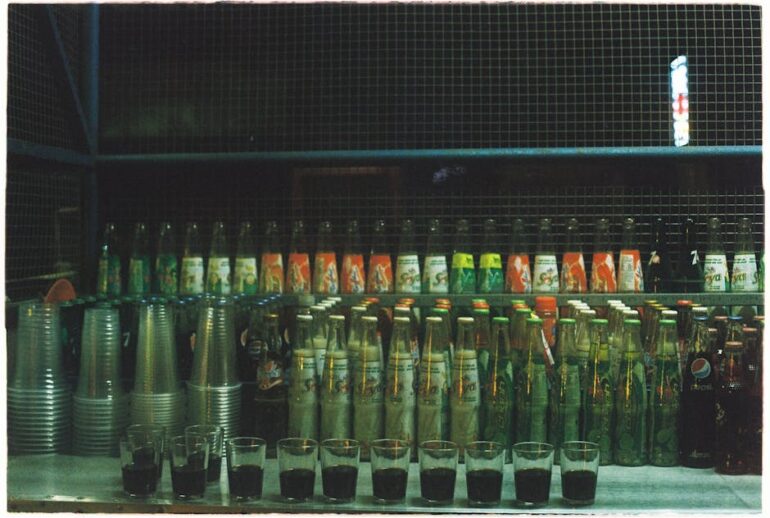It’s 2025, and seriously, who even remembers a time without digital ads popping up everywhere? Like, everywhere. You’re scrolling through some news site, there’s an ad. You’re looking for a new blender, suddenly ads for blenders follow you around like a lost puppy. It’s a wild world out there for anyone trying to get their message across online, and honestly, a lot of it feels like screaming into the void. Advertisers, the people paying for all this, they’re feeling the pinch. They put money into these ad campaigns, sometimes a ton of it, and then what? Did anyone actually see the ad? Was it some weird bot clicking it? Did it show up next to something… awkward? This whole situation, it’s why a bunch of folks still kinda lean on something called Moat, even now.
Think of it like this: your money, right? You want to know where it goes. With online advertising, it can feel like you’re throwing cash into a black hole. Moat, from Oracle, kinda acts like a flashlight in that dark hole, or maybe more like a super-smart detective for your ad spending. It doesn’t tell you what to buy, or who to target, but it sure tries to tell you if your ads actually had a chance to work. Back when it first popped up, it was a pretty big deal because, frankly, no one really knew if their display ads were even being looked at. And even in 2025, with all our fancy AI and machine learning stuff, this basic question, “Was my ad seen by a real human?”, it’s still super relevant. More so, probably, since the tricky stuff, the ad fraud and bots, they keep getting sneakier.
Why Advertisers Can’t Seem to Quit Moat
Alright, so why is this Moat thing still sticking around when there are like, a zillion other marketing tools out there? Good question, and I’ve got a few thoughts on it. It’s not just one big reason, it’s a bunch of smaller ones that stack up, making it pretty useful for anyone putting their money on the line for display ads.
Getting Real About Who Sees What (Viewability)
Okay, so imagine you print out a cool flyer for your band, right? You stick it on a lamp post. But what if that lamp post is way down an alley, or behind a huge dumpster? No one sees it. That’s kinda how online ads can be. They might load on a webpage, but they’re way down at the bottom, or in a tiny corner, or someone scrolls right past before it even finishes loading. Moat measures “viewability.” What does that mean? Basically, did enough of your ad pixels show up on a screen for enough time to actually count as “seen”? Like, if at least 50% of your display ad was on screen for at least a second, Moat counts it as viewable. For video ads, it’s 50% for two seconds. This sounds simple, but it’s massive.
I mean, before tools like Moat became common, advertisers were paying for millions of impressions, and a big chunk of those impressions probably weren’t even seen by a human being. It was a total waste. So, for a company, knowing that 80% of their display ads were actually viewable versus only 20%? That changes everything. You can then yell at your ad agency, “Hey, why are our viewability numbers so bad on this site? Fix it!” Or you find better places to put your ads where people actually look. It’s about knowing if your flyer is stuck to the right lamp post, where foot traffic actually happens. My friend, who runs a small online store, actually told me once that when they started paying attention to viewability, their ad budget just kinda stretched further, because they weren’t paying for invisible stuff anymore. Pretty cool, right?
Fighting Off the Bad Guys (Ad Fraud)
This one is a total headache for advertisers. Ad fraud. It’s like a bunch of invisible pickpockets in the digital world. You put up an ad, a bot pretends to click it, and suddenly you’ve paid for a fake click or a fake impression. Multiply that by millions, and you’re talking about serious money being stolen. It’s not just clicks either; sometimes bots “watch” video ads or fill out fake forms. It’s super annoying.
Moat steps in here, trying to sniff out this junk traffic. It uses its fancy algorithms (which are basically just super-smart detective rules) to figure out if it’s a real human looking at an ad or some computer program pretending to be one. It looks for weird patterns, like clicks coming from places that don’t make sense, or hundreds of clicks from the same IP address in a second. Does it catch every single piece of fraud? Probably not. The fraudsters are always trying new tricks, like some supervillain. But it catches a lot, and that saves advertisers piles of cash they’d otherwise just throw away. I believe this part alone makes it a pretty compelling tool for businesses, especially as the fraud gets more complicated in 2025 with AI-generated fake traffic. It’s like having a security camera for your ad campaigns.
Keeping Your Brand Safe (Brand Safety)
So, imagine you’re a fancy car company, right? You spend millions on a beautiful ad for your shiny new electric vehicle. You want that ad to show up on premium websites, places where people who can afford a luxury car hang out. What you don’t want is for your sleek car ad to suddenly appear next to, say, a super controversial article, or on some shady website promoting… questionable things. That’s brand safety, or rather, the lack of it. It can really mess up your reputation. People see your ad in a bad place and they think, “Huh, wonder why that brand supports this nonsense?”
Moat tries to help with this too. It checks the content of the webpages where your ads are served. It basically scans for words or themes that might be risky or inappropriate for your brand. Now, it’s not perfect – sometimes a weird context can slip through the cracks, or a new topic pops up that wasn’t in its ‘bad list.’ But it’s a pretty good filter. It helps advertisers avoid those embarrassing moments where their brand ends up in a place they definitely don’t want to be associated with. It’s like having someone check the neighborhood before you set up your shop.
Going Beyond Just Clicks: What Else Do We Learn?
Beyond just viewability and fraud, Moat kinda gives advertisers a clearer picture of their campaigns. It’s not just about, “Okay, we got this many clicks.” It’s more like, “This many people actually saw the ad for this long, and they were real people, and the ad was on a decent site.” This kinda information helps marketing teams understand if their ads are actually getting through, if they’re holding people’s attention, and if they’re being placed effectively. It helps them make better decisions later on, like where to spend their money next or what kind of creative works best. It gives you something solid to stand on when you’re talking about ad performance, not just vague guesses. It’s really about knowing if your message truly landed.
Moat and The Future: What’s Next for Display in 2025 and Beyond?
It’s 2025, and the digital advertising world is still moving at warp speed. We’ve got new ad formats popping up constantly – ads in augmented reality apps, in virtual worlds, on smart TVs. How does Moat stay relevant when things change so fast?
Well, what’s interesting is that Moat’s core job – measuring whether an ad was seen by a human and was placed appropriately – is actually pretty flexible. Whether the ad is a 2D banner or a 3D object in a VR space, the idea of “was it viewable?” and “was it fraudulent?” still applies. Companies like Oracle, who own Moat, they’re always tinkering with their tech to measure these new ad environments. So, for AR ads, they’d be looking at, “Did this ad appear within the user’s field of view for X seconds?” It’s just an extension of the same basic principles.
And then there’s the whole privacy thing, right? The cookie-less future, everyone talks about it. Moat, actually, isn’t really reliant on cookies in the same way some other ad tech is. It’s more about the impression itself, the ad delivery, not so much tracking individual users across the web. So, while other parts of ad tech are scrambling, Moat’s fundamental purpose might actually become even more important. It could be one of the last bastions of independent ad verification if individual user tracking gets super limited. It’s a bit like a traffic cop who doesn’t care who’s in the car, just if they’re speeding or breaking rules.
But look, it’s not all sunshine and rainbows. No system is perfect, and Moat has its own set of things to watch out for. Sometimes the numbers it spits out can be a bit confusing. And yeah, it costs money to use. Integrating it with all your other ad platforms can sometimes be a bit of a jigsaw puzzle, and sometimes, even with Moat, a really clever fraudster might slip by. It’s not a magic shield that makes all your ad problems disappear. But honestly, in my experience, having something like Moat in your corner is way better than just flying blind and hoping for the best. It’s like, you wouldn’t drive a car without a speedometer, would you? This is kinda that for your ad money.
So, in 2025, Moat is still out there doing its thing, trying to keep the digital ad world a little bit more honest and a lot more transparent. It’s a tool, yeah, but it’s a pretty helpful one for anyone who wants to make sure their hard-earned money for display ads actually does what it’s supposed to do.
FAQs About Moat Display Ads
What is Moat, specifically, in simple terms?
Basically, Moat is a technology that helps advertisers figure out if their online ads were actually seen by real people, if those ads showed up on appropriate websites, and if any sneaky bots were pretending to view or click them. Think of it as an independent checker for your digital display ad campaigns.
Why would someone still use Moat for display ads in 2025?
Even with all the new tech, the core problems of online advertising – like ad fraud getting smarter, people just scrolling past ads, and ads showing up next to bad content – haven’t gone away. Moat helps tackle these head-on by giving advertisers concrete data on viewability (if the ad was seen), ad fraud (if bots were involved), and brand safety (where the ad appeared), making sure ad budgets aren’t wasted.
Does Moat stop all ad fraud?
No tool can stop all ad fraud, unfortunately. The people doing ad fraud are constantly finding new ways to trick systems. But Moat is really good at detecting a large chunk of it and identifying suspicious activity, which significantly reduces an advertiser’s losses from fake clicks and impressions. It’s a powerful defense, but not an impenetrable shield.
How does Moat adapt to new ad formats like AR or connected TV?
Moat’s underlying principles for measuring viewability and fraud are pretty adaptable. Whether it’s a traditional banner ad or an ad placed in an augmented reality environment, Moat’s tech can be tweaked to measure if the ad was within a user’s field of view for long enough, or if the interaction seemed human-like. They’re always updating their systems to keep pace with new ways ads are shown.
Is Moat hard to set up or use?
For advertisers, integrating Moat usually means working with their ad platforms or agencies to make sure the Moat tags are correctly implemented. It can feel a bit technical at first, like setting up a new app on your phone, but once it’s running, the reports and data it provides are generally user-friendly and give pretty clear pictures of campaign performance.













